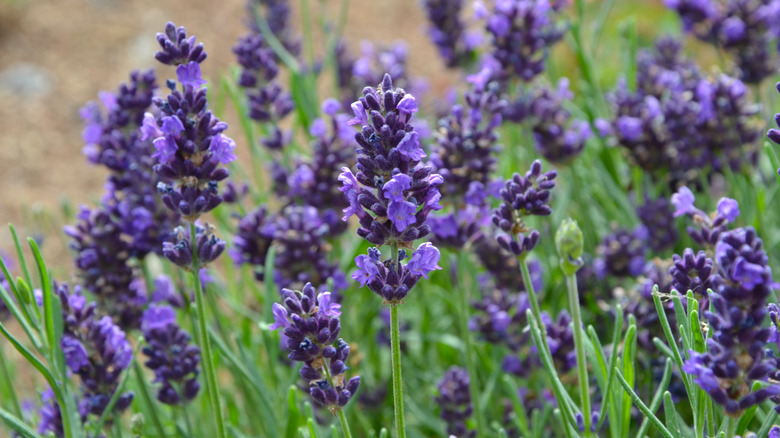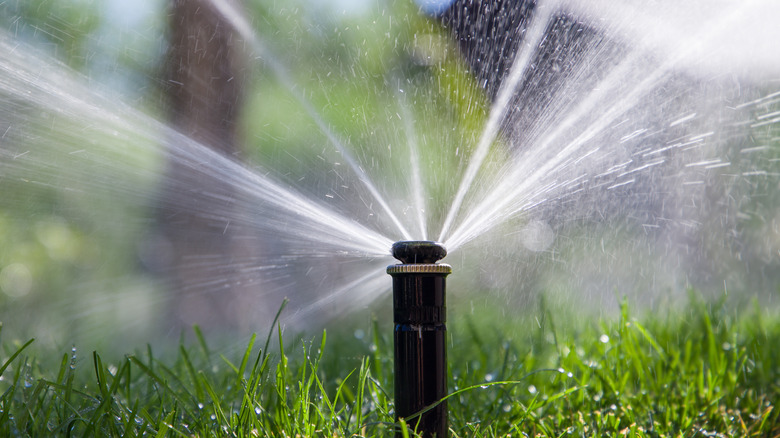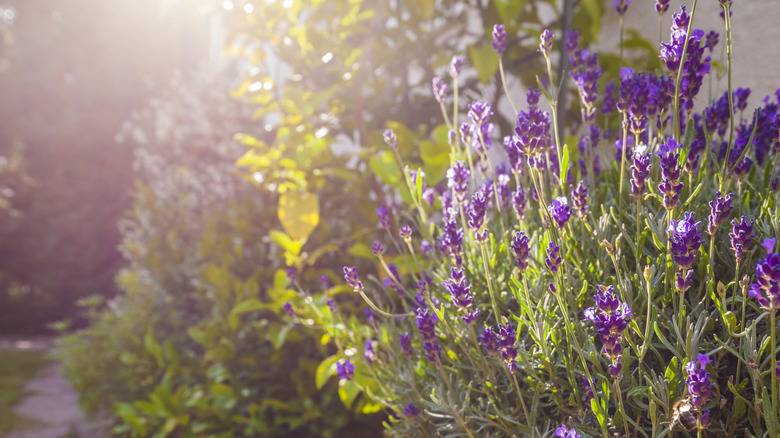The Spot Gardeners Should Avoid When Planting Lavender
At a glance, lavender (Lavandula spp.) might seem like a simple enough flower to grow because it doesn't require much maintenance. However, before planting lavender, you should know that there's at least one spot in every garden where it will struggle. It's best to avoid growing this plant anywhere near a water source, including sprinklers, other irrigation systems, and even your roof's downspouts.
For the most part, lavender likes things simple. Most species in this genus, including common lavender (Lavandula angustifolia), need dry roots, lots of sun, and well-drained soil to thrive in USDA hardiness zones 5 to 9. When you plant it near sprinklers or anywhere water tends to collect, you're subjecting it to intolerable growing conditions. Too much moisture in the soil can lead to various problems, including various fungal infections and root rot. If you want this low-maintenance plant to stay low maintenance in the long term, plant it in a location that won't get drenched all the time or otherwise accumulate water.
Why lavender struggles in consistently wet areas
Lavender doesn't tolerate water-logged soil. Constant moisture around the roots of your plant will choke out the oxygen they need to survive. Once root rot sets in — a common illness affecting plants in waterlogged soil — you'll need to discard infected plants and replace the top layer of soil. That's why planting lavender near sprinklers, irrigation systems, or even under roof overhangs that channel water to the area is a recipe for disaster. It may seem like all that extra water is doing the plant a favour, especially during hot, dry spells, but established lavender plants tolerate droughts better than getting their feet wet from uncontrolled water accumulation.
It's not just the roots that can suffer from excessive watering. Wet foliage creates the perfect conditions for fungal illnesses like leaf spot, especially if the airflow around the plants isn't great. Lavender is susceptible to this disease. If your lavender plant has leaves that have turned brown, chances are it's suffering from leaf spot, and you're in for a long battle. You can avoid this unpleasant scenario by keeping the lavender away from areas where water spray would contact the plants.
Where to plant lavender instead
The best spot in your garden to plant lavender is a place that's dry and sunny. The soil should be well-drained and have an alkaline-to-neutral pH level. If your garden has heavy clay or tends to hold water, plant your lavender in raised beds or containers. This will prevent water from pooling around the roots and causing rot. Organic mulches retain moisture, which your lavender doesn't need more of. Instead, use a mulch like gravel, which helps keep the area where the stem meets the roots dry. To keep your lavender happy, make sure the chosen location gets full sun for at least 6 hours a day.
Space your lavender plants at least 24 inches apart to allow for adequate air circulation. Doing this can reduce the risk of fungal diseases that take advantage of poor airflow between plants, and it will help your lavender's leaves dry faster after it rains or after watering. By choosing the right location and soil conditions in your garden, you'll grow beautiful and fragrant lavender with minimal maintenance.


